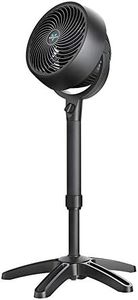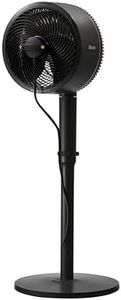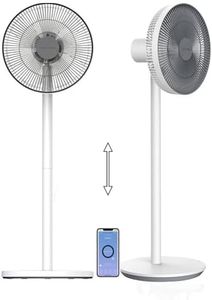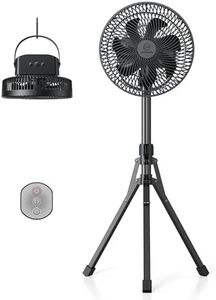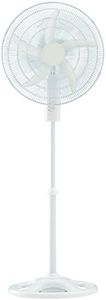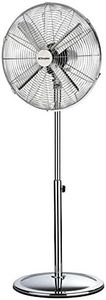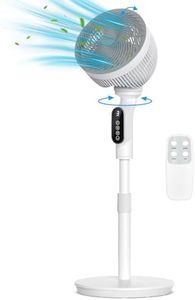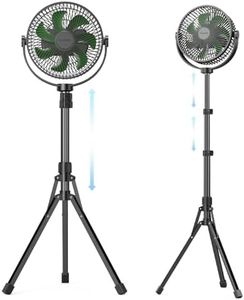We Use CookiesWe use cookies to enhance the security, performance,
functionality and for analytical and promotional activities. By continuing to browse this site you
are agreeing to our privacy policy
10 Best Quiet Pedestal Fan
From leading brands and best sellers available on the web.Buying Guide for the Best Quiet Pedestal Fan
Choosing a quiet pedestal fan can really improve your comfort, especially if you’re sensitive to noise or need a peaceful environment for sleep, work, or relaxation. Focusing on the right specifications ensures you get a fan that not only cools effectively but also stays unobtrusive and convenient. Understanding what each key feature means—and how it fits your lifestyle—helps you make the most suitable choice.Noise Level (Decibels)Noise level is measured in decibels (dB) and indicates how quietly the fan operates. This is especially important if you want the fan for a bedroom, office, or any quiet space. Usually, lower decibel values mean the fan is quieter, with 40 dB or below being whisper-quiet, 40-55 dB being moderate, and above that starting to be noticeable or distracting. For sleeping or relaxation, go for the quietest segment (40 dB or less), while a moderate noise level may be fine for living areas or kitchen use. Always consider where the fan will be used to decide which noise level suits you best.
Airflow (CFM or m³/h)Airflow, often measured in cubic feet per minute (CFM) or cubic meters per hour (m³/h), tells you how much air the fan can move. Higher airflow generally means better cooling, but this can also mean more noise if not well-designed. Low airflow fans (below 1000 CFM) are suitable for small rooms or personal use, mid-range (1000-2000 CFM) works for medium spaces, and high airflow (above 2000 CFM) is ideal for large rooms or open areas. Think about your room size and cooling needs: higher airflow for bigger/hotter spaces, lower for smaller/less demanding ones.
Speed SettingsSpeed settings are the number of airflow options you can select, such as Low, Medium, and High. More settings give you finer control over both noise and air movement. Fans with several speed choices let you pick quieter/lower speeds for calm environments and higher speeds when more cooling is needed. If you want flexibility and the ability to keep things quiet at times, choose a fan with at least three speed settings.
OscillationOscillation refers to the fan’s ability to rotate side-to-side, helping spread air across a wider area. Some fans offer multiple oscillation angles, such as 60°, 90°, or more. Smaller oscillation angles are good for focused airflow, while larger ones are better for covering big spaces. Consider if you need the airflow directed at one spot or if you want to share it with others or circulate air around the entire room.
Height and Tilt AdjustabilityHeight and tilt adjustability allow you to aim the fan’s airflow where it’s needed. Height adjustments help you point air over or under obstacles, while tilt adjustment lets you aim higher or lower. A wider range of adjustments makes the fan more versatile for different setups, like cooling a bed, desk, or an entire lounge area. Pick a fan with enough adjustment options for your intended use and room layout.
Control MethodControl method describes how you operate the fan, such as push buttons, dials, remote control, or even app-based controls. Remote or smart controls add convenience, so you don’t need to get up each time you want to change a setting. If convenience and ease-of-use matter to you—especially for fans used in bedrooms or large rooms—a remote or smart app feature is worth considering.
Build QualityBuild quality affects how sturdy, stable, and long-lasting the fan will be. Look for solid materials, a steady base, and smooth movement parts. Heavier bases help prevent tipping, and good joint or hinge quality means quieter oscillations. If you plan to move the fan around frequently or run it for long periods, a robust build is more important for comfort and durability.


